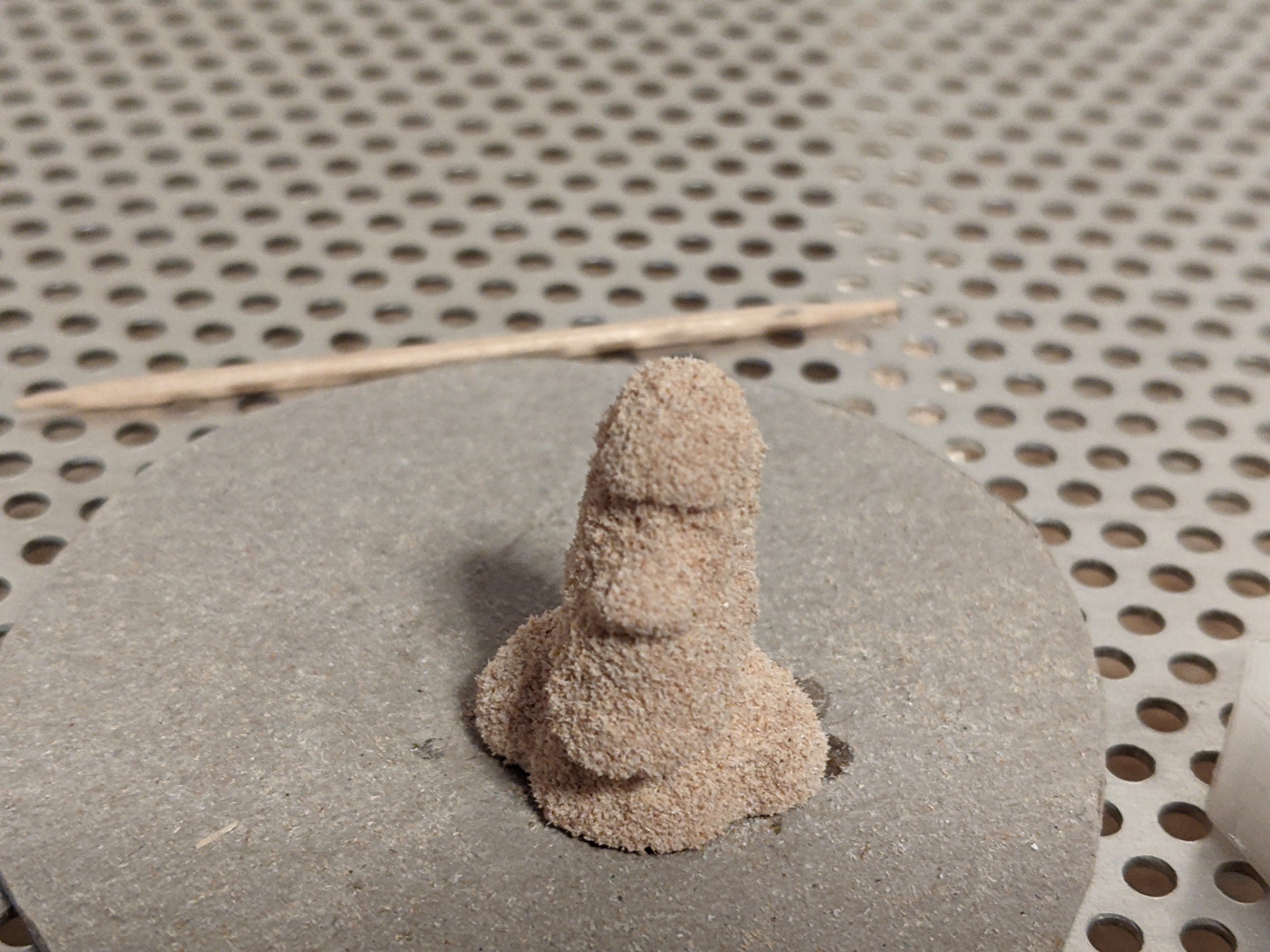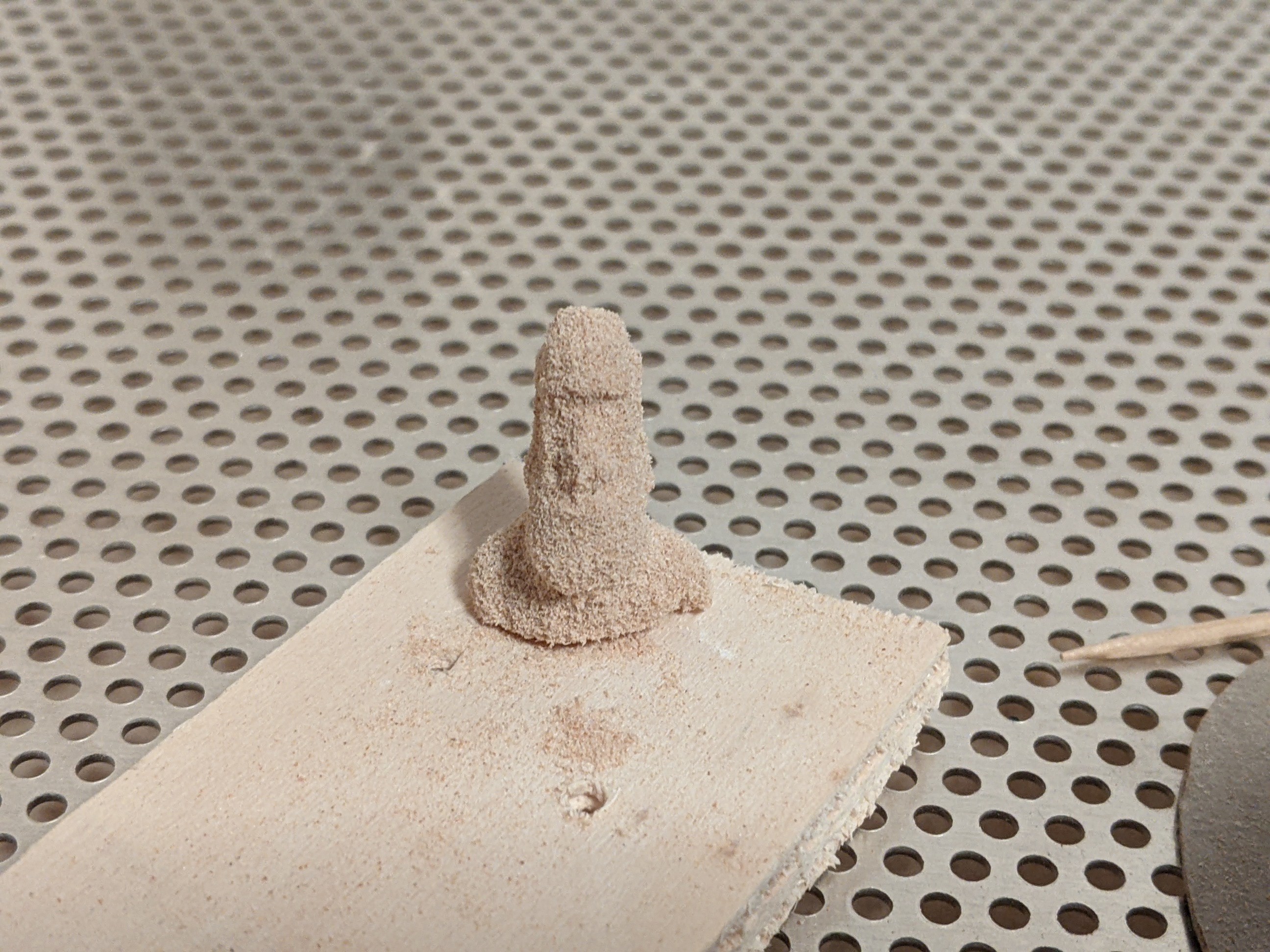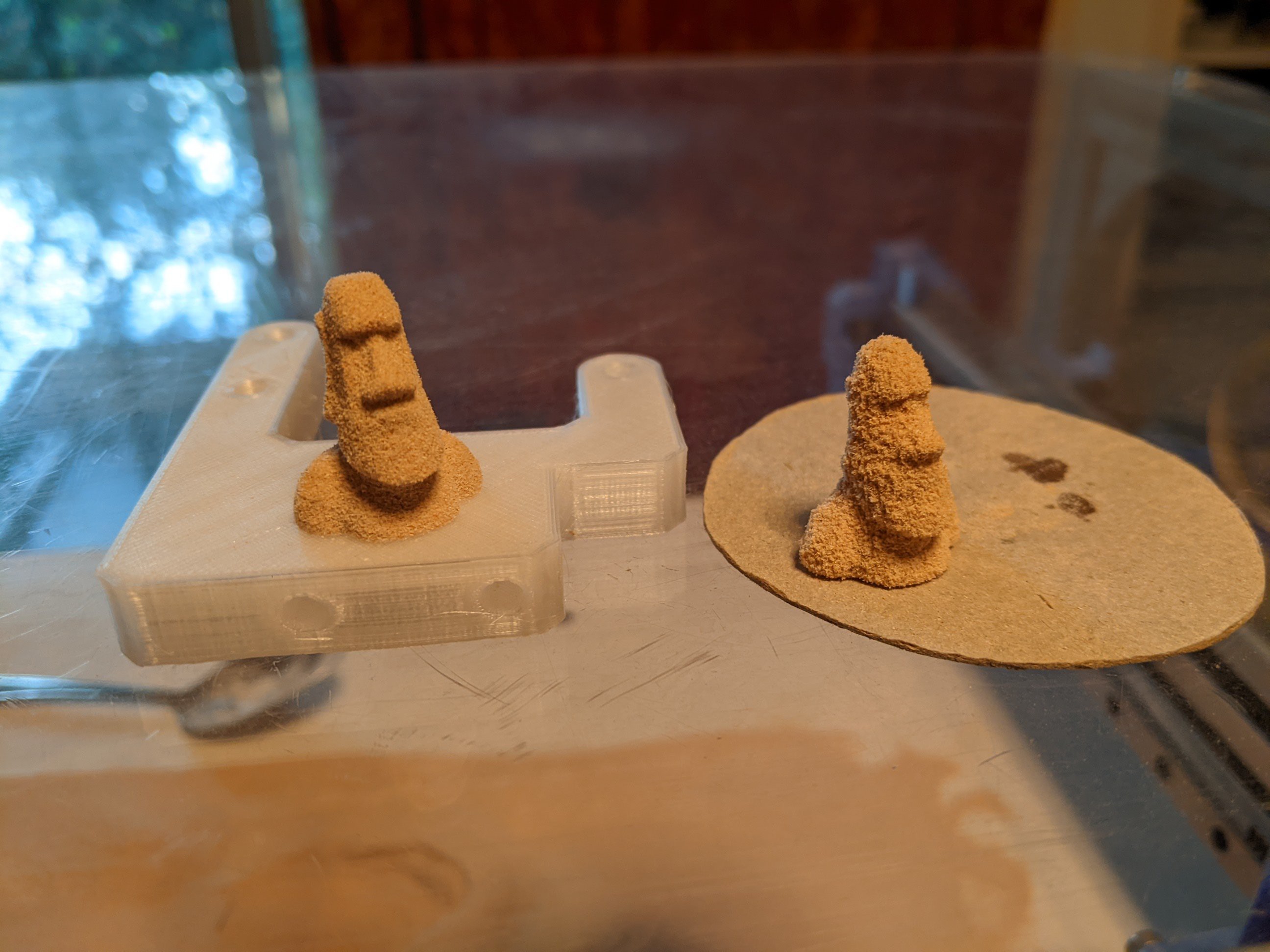The summer vacation with hacker camps are not that productive of a time. Nevertheless, I have found some more time and have been printing again. Only the later experiments have been documented well, so early test parameters have been mostly lost.
UF based powder
An experiment with wood and UF glue has not given the desired results. The UF wicks a lot of the water to unprinted areas, leaving the part swollen. Cleaning the part with air does reveal the part, and green strength is enough to carefully infiltrate the part, but it is not stellar. Also the surface roughness is fairly noticeable.
recipe:
- powder by weight, 4 parts wood, 1 part UF glue

PVA based powder
Wood and PVA gave parts that were fairly weak and without a good resolution. I am limited by the fact that I have PVA flakes, ground down and not PVA powder, so I cannot conclude that this recipe cannot work, but I do not have the materials present to properly test it. The parts I had cleaned fairly well, but parts of the model did flake off during cleaning.
recipe:
- Lost in the hiatus

Dextrine sugar based powder
Wood, dextrin and powdered sugar gave a surprisingly great result. The part was cleaned without much fuss, no parts broke off and the resolution of the part is noticeably higher than the previous prints. This was the first attempt of this recipe. I did want to use the 20% IPA binder, but the printhead was broken, so I had to resort to the 40% IPA printhead.
recipe:
- powder by weight, 4 parts wood, 1 part dextrin, 1 part powdered sugar
- Binder by weight, 4 parts 99% IPA, 6 parts demineralized water
- 0.2mm layer height
- 150% density (900 drops per inch)
- 300DPI print data resolution
- 130% overfeed (printer specific setting)
The dextrin/powdered sugar mix gives such good results that I first want to work on post processing before optimizing the powder further. The next step is to print more parts and see what post processing steps yield the best results. If I can retain these details after post processing I will have a very workable recipe. I can then look for further optimizations in the recipe to make it better.

Discussions
Become a Hackaday.io Member
Create an account to leave a comment. Already have an account? Log In.